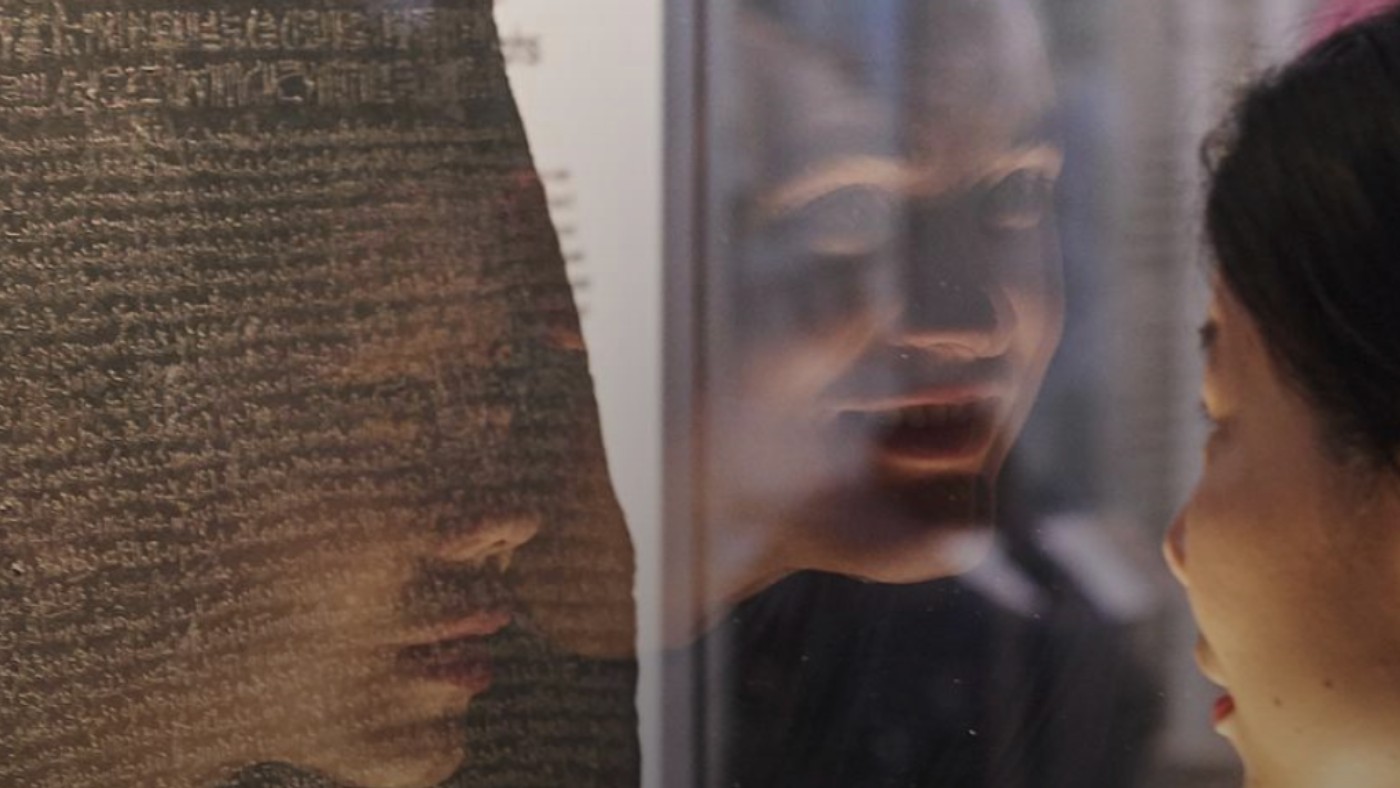Hieroglyphs: Unlocking Ancient Egypt – exhibition review
This ‘expansive’ exhibition investigates the ‘19th century fascination with hieroglyphs’

In 1799, French soldiers marching through the ruins of the Egyptian town of Rashid made a remarkable discovery, said Francesca Peacock in The Daily Telegraph. It was the dark slab of granite-like rock now known as the Rosetta Stone: a large tablet inscribed in 196BC with three versions of the same text in Greek, demotic script (a form of ancient Egyptian cursive writing) – and hieroglyphs.
The beautiful semi-pictorial script of the Pharaohs and their monuments had fascinated scholars for centuries, but there had been no means of reading them. Some believed hieroglyphs were not a written form of language, but a series of “magical symbols”.
From France to the British Museum
Following Napoleon’s retreat from Egypt, the stone passed into British guardianship. It was in 1822 that a French Egyptologist called Jean-François Champollion finally deciphered it; supposedly, he rushed into his brother’s room, shouted “Look! I’ve got it!”, then collapsed on the floor.
The Week
Escape your echo chamber. Get the facts behind the news, plus analysis from multiple perspectives.

Sign up for The Week's Free Newsletters
From our morning news briefing to a weekly Good News Newsletter, get the best of The Week delivered directly to your inbox.
From our morning news briefing to a weekly Good News Newsletter, get the best of The Week delivered directly to your inbox.
Now, 200 years on from his eureka moment, the British Museum, where the stone famously resides, has mounted an “expansive” exhibition that investigates the “19th century fascination with hieroglyphs within a wider context”. It brings together many “wonderful examples of the decoded language itself”, including vividly decorated sheets of papyrus, elegantly inscribed tablets and the Rosetta Stone itself, borrowed from elsewhere in the museum. These shed much light on quotidian life in Ancient Egypt, bearing everything from “protective spells to safeguard children, divorce documents and love poems, and even erotic drawings and jokes”.
‘Spine-tinglingly’ inscriptions
“This is a dense and demanding show,” said Laura Freeman in The Times. “Don’t go expecting King Tut’s loot or Valley of the Kings bling.” Yet the subtle treasures on display are “spine-tinglingly” fascinating all the same. We see many inscriptions, some “shallow as scratches, others roughly gouged”; even if you can’t make head nor tail of them, they are frequently “ravishing” as relief sculpture.
One particularly beautiful object is a fragment of a papyrus scroll found in the tomb of Queen Nedjmet and known as The Book of the Dead (c.1069BC). This ornate funerary text is “alive with blue baboons, spotted cows and a pair of lions with bumblebee tails”, some of which are believed to be depictions of Thoth, god of writing. There are even a few moments of light relief: one small amulet, for instance, bears an image of “a man with a phallus so huge he can wrap it round his neck”.
Learning about the Rosetta Stone
The show becomes “drier” when it broaches the subject of the Rosetta Stone and its eventual decipherment, said Caroline McGinn on Time Out. Yet this is not to suggest it is boring. We learn, for instance, about the different languages of Ancient Egypt and their respective scripts, and the ways in which they fell out of circulation: they were “obliterated by years of conquest and plunder”, at the hands of Caesar Augustus and later invaders.
A free daily email with the biggest news stories of the day – and the best features from TheWeek.com
The exhibition is also “aware of its troubled context”: there have been calls to repatriate the stone in recent years. However, “that cry seems a bit half-hearted in this case”: there are at least 28 other surviving stones bearing the same inscription, most of which remain in Egypt. Overall, this “nuanced and never dumbed-down” exhibition does a fine job of explaining just why the Rosetta Stone is so important. It is a “thoughtful and scholarly” event that “requires and repays close attention”.
British Museum, London WC1. Until 19 February; britishmuseum.org
-
 How to financially prepare for divorce
How to financially prepare for divorceThe Explainer Facing ‘irreconcilable differences’ does not have to be financially devastating
-
 Why it’s important to shop around for a mortgage and what to look for
Why it’s important to shop around for a mortgage and what to look forThe Explainer You can save big by comparing different mortgage offers
-
 4 ways to save on rising health care costs
4 ways to save on rising health care costsThe Explainer Health care expenses are part of an overall increase in the cost of living for Americans
-
 The best food books of 2025
The best food books of 2025The Week Recommends From mouthwatering recipes to insightful essays, these colourful books will both inspire and entertain
-
 Art that made the news in 2025
Art that made the news in 2025The Explainer From a short-lived Banksy mural to an Egyptian statue dating back three millennia
-
 Nine best TV shows of the year
Nine best TV shows of the yearThe Week Recommends From Adolescence to Amandaland
-
 Winter holidays in the snow and sun
Winter holidays in the snow and sunThe Week Recommends Escape the dark, cold days with the perfect getaway
-
 The best homes of the year
The best homes of the yearFeature Featuring a former helicopter engine repair workshop in Washington, D.C. and high-rise living in San Francisco
-
 Critics’ choice: The year’s top 10 movies
Critics’ choice: The year’s top 10 moviesFeature ‘One Battle After Another’ and ‘It Was Just an Accident’ stand out
-
 A luxury walking tour in Western Australia
A luxury walking tour in Western AustraliaThe Week Recommends Walk through an ‘ancient forest’ and listen to the ‘gentle hushing’ of the upper canopy
-
 Joanna Trollope: novelist who had a No. 1 bestseller with The Rector’s Wife
Joanna Trollope: novelist who had a No. 1 bestseller with The Rector’s WifeIn the Spotlight Trollope found fame with intelligent novels about the dramas and dilemmas of modern women